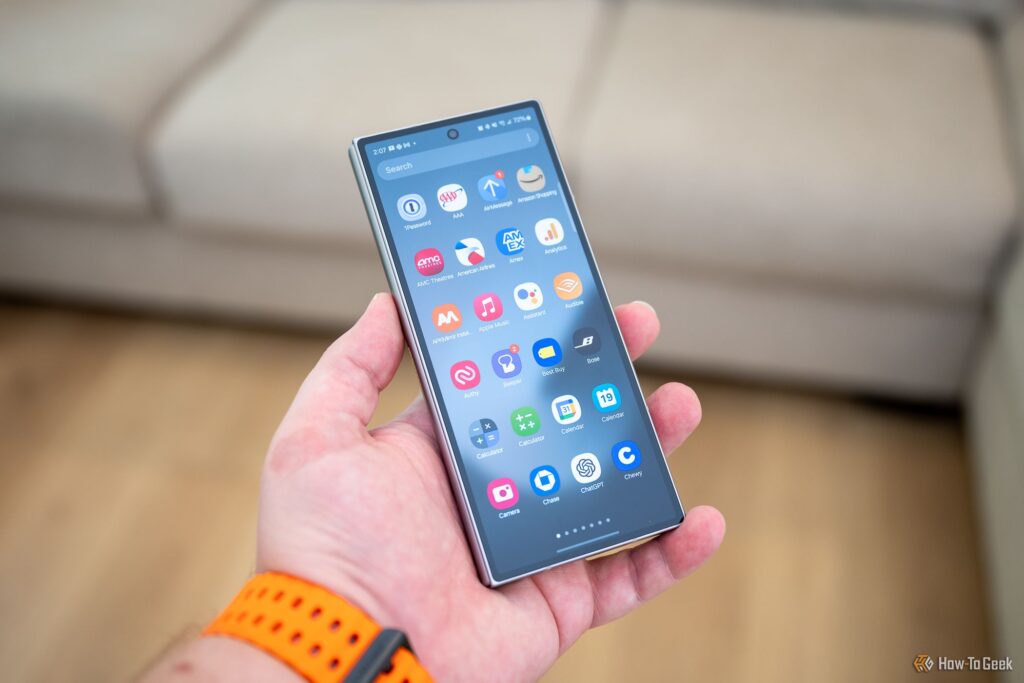Over time, as you install more apps, your Android smartphone starts to get cluttered. There are several things you can do to better organize the apps installed on your phone and make it easier to find the apps you’re looking for.
The exact steps to follow for each method vary depending on the phone model you use. The following guide will give you a general idea of where the various options are.
1 Organize apps into folders
Android allows you to create folders and place apps within them. This allows you to categorize apps and find related apps at once. A good example of this feature is having all your social media apps like Facebook and Instagram in one app folder.
To create such a folder, access your home screen. Tap and hold the first app you want to categorize and drag this app to another related app. Android will create a folder and put both apps inside it.
You can also create app folders by selecting apps from your phone’s app drawer.
To add more apps to a folder, drag and drop them into the folder. Android names folders according to the apps you add to them. To rename, open the folder, tap the current name, and enter the new name.
To remove an app from a folder, go to the folder, press and hold the app you want to remove, and drop the app outside of the folder. Note that doing this will only remove the app from the folder. The app has not been deleted.
2 Pin an app to the dock
Android has an app dock at the bottom of the screen that lets you launch your favorite apps from any home screen. Pin your custom apps to this dock for easy access.
To do this, find the app you want to pin in your app drawer or home screen. Drag and drop the app onto the dock. The app will be placed in the dock.
There is a limit to the number of apps that can be pinned to the dock. If the dock is full, remove existing apps from there by tapping and holding them and dropping them outside of the dock.
3 Sort apps in the app drawer
You can sort apps using various filters in your Android smartphone’s app drawer. This will bring important apps to the top of the drawer.
To do this, access your phone’s app drawer. Select Manage from the top right corner. Select “Sort” in the menu that opens. The Sort apps panel will appear. Here you can choose to sort your apps by name, installation time, and most frequently used.
Once you select an option, Android will display the app accordingly in the app drawer. You can return to the default sorting method at any time by selecting an option in the panel.
4 Change the home screen grid layout
In fact, you can customize the home screen grid layout to include additional or fewer apps. This allows you to display exactly the number of apps you want on your home screen.
To make this change, long press on an empty space on your home screen and select Layout from the bottom bar. Choose your desired layout. Options include 3 x 6, 4 x 5, 4 x 6, 5 x 5, and 5 x 6.
After choosing a new layout, tap Apply for the changes to take effect.
Many apps have widgets that you can place on your phone’s home screen to access their features without opening the app. The most common example is the clock widget you get from the Clock app. You can use that widget to check the current time without having to open the Clock app.
To see available widgets and add them to your home screen, long press on a blank space on your home screen and select Widgets from the bottom bar. All available widgets will be displayed. To add a widget to your home screen, tap and hold the widget and drop it onto your home screen.
To remove a widget from your home screen later, touch and hold the widget.[削除]Select.
6 Delete unnecessary apps from the home screen
If your home screen is cluttered and full of apps, try removing unnecessary apps from there. This allows you to keep the app and keep it from appearing on your home screen.
To do this, find the app and remove it from your home screen. Tap and hold an app, then select Delete. In the prompt that opens, select Delete.
Follow the steps above to remove each unwanted app from your phone’s home screen. To add an app back to your home screen in the future, drag it from the app drawer and drop it on the appropriate home screen.
7 Prevent Android from adding new apps to the home screen
On many phones, Android automatically adds new apps you install to your home screen. This makes accessing these apps easier, but if you don’t want that, you can turn off the feature.
Long press on an empty area of your home screen and select “More” from the bar at the bottom. On the next page, turn off the “Add app to home screen” option.
That’s it!
8 Lock home screen layout
To avoid accidentally changing the home screen layout, you can lock the current layout. This will prevent changes from being made to your home screen.
To do this, long press on an empty space on the home screen and select “More” from the bottom bar. On the screen that opens, check the Lock Home Screen Layout option.
That’s it.
This is how you arrange and organize your applications on your Android device. This makes it easier to find apps and improves productivity. You can experiment with other options available in your phone’s customization settings to make your phone truly yours. enjoy!


